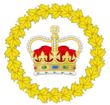Canadian conscription plebiscite, 1942
| Canadian conscription plebiscite, 1942 |
|---|
|
Are you in favour of releasing the Government from any obligations arising out of any past commitments restricting the methods of raising men for military service? |
| Location |
All 9 provinces, and 1 of the 2 territories of Canada |
|---|
| Date |
April 27, 1942 (1942-04-27) |
|---|
Results
|
Votes |
% |
 Yes Yes |
2,945,514 |
7001656200000000000♠65.62% |
 No No |
1,543,006 |
7001343800000000000♠34.38% |
| Valid votes |
4,488,520 |
7001967600000000000♠96.76% |
| Invalid or blank votes |
150,327 |
7000324000000000000♠3.24% |
| Total votes |
4,638,847 |
100.00% |
| Registered voters/turnout |
6,502,234 |
7001713400000000000♠71.34% |
|
| Results by Results by jurisdiction |
| |
| Yes — No |
|
A plebiscite on conscription was held in Canada on 27 April 1942.[1] It was held in response to the Conservative Party lobbying Mackenzie King to introduce compulsory overseas military service, the government having previously promised not to introduce same in 1940.[2] The result was 66% voting in favour,[2] with Quebec being the only province to have a majority voting against. Quebec's strong majority against the commitment's release prompted Mackenzie King not to pursue the issue until later events prompted a change in position.
Results
Are you in favour of releasing the Government from any obligations arising out of any past commitments restricting the methods of raising men for military service?
| Choice |
Votes |
% |
|---|
| For | 2,945,514 | 65.63 |
| Against | 1,543,006 | 34.37 |
| Invalid/blank votes | 50,327 | – |
| Total | 4,638,847 | 100 |
| Registered voters/turnout | 6,502,234 | 71.34 |
| Source: Nohlen |
By province
| Canadian conscription plebiscite, 1942 |
| Jurisdiction |
 Yes Yes |
No |
| Votes | % | Votes | % |
| Alberta | 186,624 | 71.1 | 75,880 | 28.9 |
| British Columbia | 253,844 | 80.4 | 62,033 | 19.6 |
| Manitoba | 218,093 | 80.3 | 53,651 | 19.7 |
| New Brunswick | 105,629 | 69.8 | 45,743 | 30.2 |
| Nova Scotia | 120,763 | 77.1 | 35,840 | 22.1 |
| Ontario | 1,202,953 | 84.0 | 229,847 | 16.0 |
| Prince Edward Island | 23,568 | 82.9 | 4,869 | 17.1 |
| Quebec | 375,650 | 27.9 | 971,925 | 72.1 |
| Saskatchewan | 183,617 | 73.1 | 67,654 | 26.9 |
| Yukon | 847 | 74.4 | 291 | 25.6 |
| Total civilian vote | 2,670,088 | 63.3 | 1,547,724 | 36.7 |
| Military vote | 251,118 | 80.5 | 60,885 | 19.5 |
| Canada | 2,921,206 | 64.5 | 1,608,609 | 35.5 |
The referendum was held in all 245 electoral districts, which covered all nine provinces and one of the two territories. Residents in the Northwest Territories did not have a vote, as their area was not organized as an electoral district.
References
- ↑ Nohlen, D (2005) Elections in the Americas: A data handbook, Volume I, p127 ISBN 978-0-19-928357-6
- 1 2 Nohlen, p130

